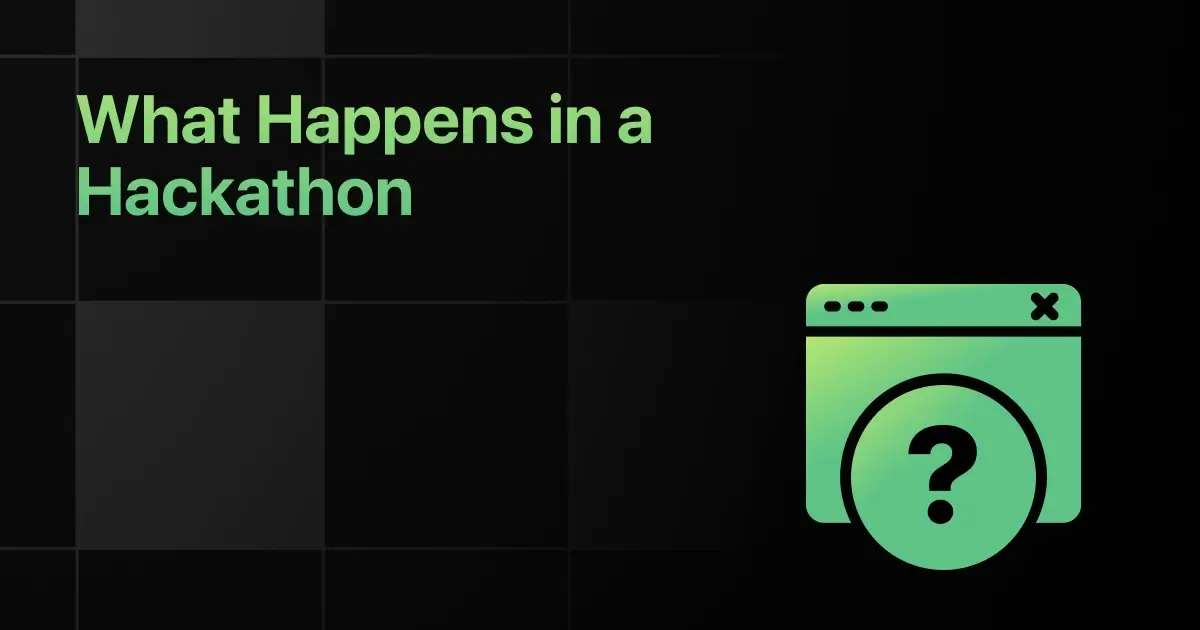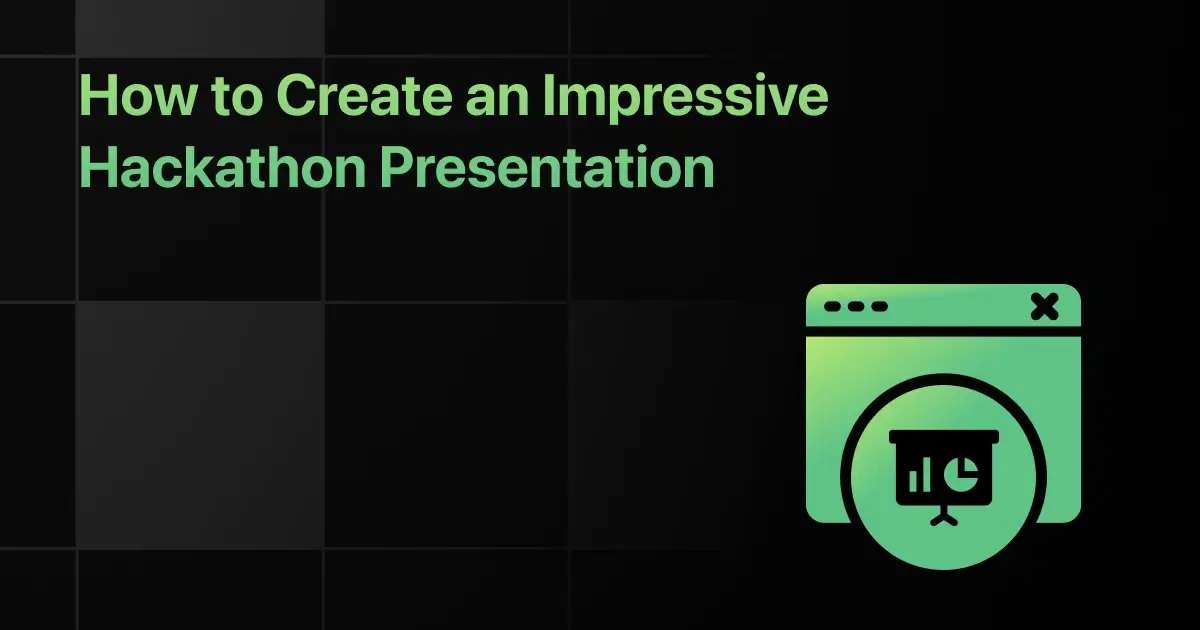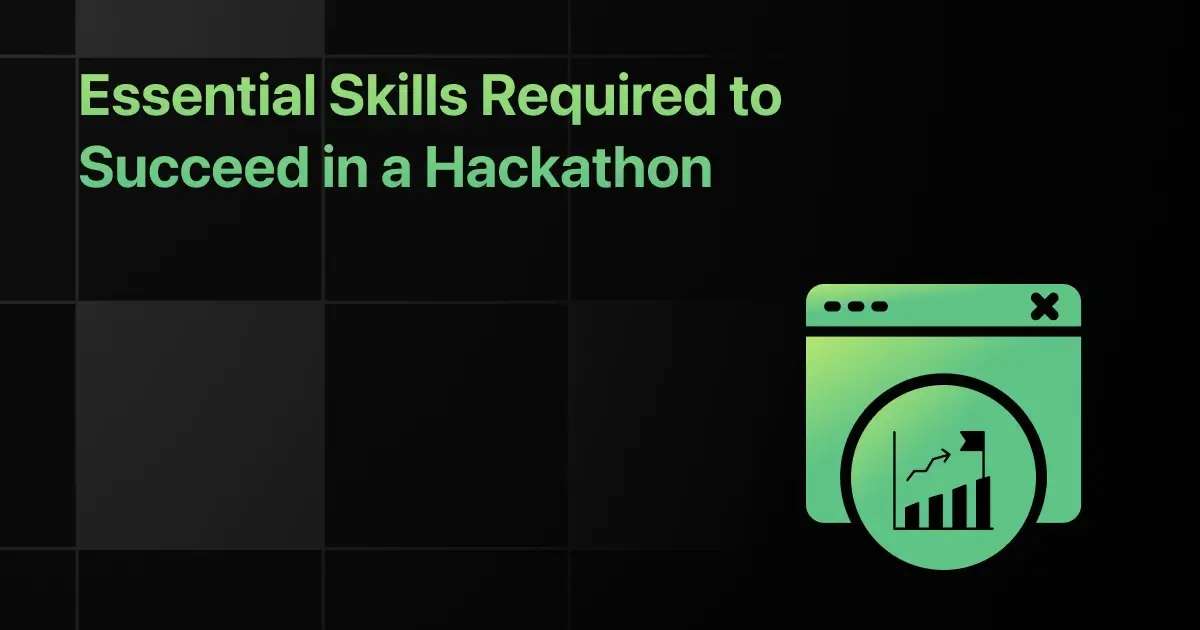What Happens in a Hackathon (How do they Work)

Ever wondered what actually happens inside a hackathon? Imagine a space filled with energy where students, developers, and designers come together to create something meaningful within a short time. That is what a hackathon feels like, an event that blends creativity, problem solving, and technology.
Hackathons are now a key part of India’s tech culture, especially across colleges and startup communities. They allow people with different skills to work together, build prototypes, and present new ideas that can make a real impact.
In this guide, we will explore how hackathons work, what you can expect during one, and how to prepare if you are joining for the first time. By the end, you will have a clear idea of what truly happens behind those long nights of coding and collaboration.
What is a Hackathon?
A hackathon is a collaborative event where people come together to design and build innovative solutions within a limited time, usually 24 to 72 hours. The word “hackathon” combines “hack,” which means creative problem solving, and “marathon,” which represents continuous effort. Participants form small teams to brainstorm ideas, develop prototypes, and present their projects to judges.
Hackathons often focus on solving real-world problems across fields like healthcare, education, sustainability, and finance. They attract students, developers, designers, and even entrepreneurs who want to test their skills, learn new technologies, and collaborate with like-minded people.
What Happens in a Hackathon (Step-by-Step Breakdown)
1. Registration and Team Formation
Participants start by registering for the hackathon and forming teams, usually made up of two to four members. Teams often include people from different backgrounds, such as coding, design, and business so that each idea has a balance of skills.
2. Problem Statement and Theme Selection
Once the event begins, organizers announce the main theme or share specific problem statements. Teams choose one that interests them and start discussing possible solutions based on their skills and knowledge.
3. Brainstorming and Idea Validation
This stage is all about planning. Teams share ideas, research similar projects, and finalize a concept that is both creative and practical. Mentors may guide them on refining the idea and making it more impactful.
4. Building the Prototype
Now comes the development phase. Teams start coding, designing, and integrating features to create a working version of their idea. They test and refine the product continuously to make sure it works as intended.
5. Presentation and Judging
At the end, each team presents its project to a panel of judges. They explain the problem, demonstrate their prototype, and highlight how their solution stands out. The best projects are selected based on creativity, functionality, and impact.
How Do Hackathons Work in India?
1. Organized by Colleges, Corporates, and Platforms
Engineering colleges, tech companies, and platforms like Devfolio, Unstop, and Devpost host hackathons in India. They create opportunities for students and professionals to showcase innovation and problem solving.
2. Focused on Real Government or Industry Problems
Many Indian hackathons are built around real problem statements provided by ministries, startups, or non-profit groups. Events like the Smart India Hackathon connect students directly with real challenges faced by government departments.
3. Multiple Rounds and Shortlisted Teams
Most events start with an online idea submission. Shortlisted teams are invited to the finale, where they work on the prototype in person or virtually. This process ensures only well-researched ideas move ahead.
4. Mentorship and Evaluation
Mentors guide teams through coding, design, and presentation. Judges evaluate the final output based on criteria like innovation, technical depth, usability, and impact.
5. Rewards, Networking, and Recognition
Winners often receive cash prizes, internships, or funding opportunities. Beyond that, participants gain exposure, industry connections, and the confidence to pursue their ideas further.
What to Expect During a Hackathon
1. A Fast-Paced and Collaborative Environment
Hackathons are intense but exciting. You will be surrounded by people who are passionate about building and learning. Expect constant discussions, coding sessions, and brainstorming throughout the event.
2. Clear Deadlines and Time Pressure
Every hackathon runs on a strict schedule. You will have a fixed number of hours to plan, build, test, and present your project, which teaches you how to manage time and work under pressure.
3. Access to Mentors and Resources
During the event, mentors and technical experts will be available to guide you. They help refine your idea, solve technical challenges, and ensure that your project stays on track.
4. Regular Checkpoints and Evaluations
Teams are usually required to share progress updates with organizers or mentors. These checkpoints ensure your project aligns with the event goals and that you are moving in the right direction.
5. Final Demo and Networking Opportunities
At the end of the hackathon, every team presents their project to the judges. You also get the chance to meet recruiters, startup founders, and other developers who can open doors to future opportunities.
Who Can Participate in a Hackathon?
Anyone with curiosity, creativity, and a willingness to solve problems can take part in a hackathon. These events bring together people from different backgrounds, including students, developers, designers, and entrepreneurs, who collaborate to turn ideas into real projects. Technical knowledge helps, but it is not always required, since teams often include members who focus on design, presentation, and problem research.
Hackathons are open to beginners as well as experienced professionals. Many college-level events encourage first-time participants, while larger national and corporate hackathons attract skilled developers and innovators. Whether you are looking to learn, build your portfolio, or connect with potential employers, hackathons offer a structured space to grow your skills and confidence.
Benefits of Participating in Hackathons
Participating in hackathons helps you develop both technical and teamwork skills in a short time. You learn to apply programming, design, and analytical thinking to real problems while working under tight deadlines. This hands-on experience improves your ability to think critically, plan efficiently, and build functional prototypes.
Hackathons also open doors to networking and career opportunities. You get to interact with mentors, recruiters, and industry experts who can guide you toward internships or full-time roles. Many companies use hackathons to spot talent and fund promising ideas, which means your project could lead to something much bigger after the event.
Common Mistakes Beginners Make
Beginners often enter hackathons with great enthusiasm but little planning. The fast pace and limited time can make it easy to lose focus or get stuck on small details. Understanding these common mistakes can help you stay organized and make the most of the experience.
1. Starting Without a Clear Plan
Many teams begin coding immediately without outlining the problem or defining their goal. A simple roadmap can save hours and keep everyone aligned.
2. Choosing an Overly Complex Idea
It is tempting to build something ambitious, but beginners should focus on simple, working prototypes. A clear, functional solution is always better than an unfinished idea.
3. Ignoring Team Communication
Poor coordination between team members often leads to confusion and delays. Regular check-ins and task division help maintain steady progress.
4. Neglecting the Presentation
Even the best project can lose points if it is not presented well. Judges value clear explanations, live demos, and proper documentation.
5. Skipping Testing and Refinement
Many teams submit projects without testing, which can result in technical errors during the final demo. Always allocate time for debugging and fine-tuning your solution.
Tips to Make the Most of Your Hackathon
A hackathon can be both exciting and intense, but with the right approach, you can make it a rewarding experience. Here are some practical tips to help you perform well and enjoy the process:
- Plan Early: Spend time understanding the theme and preparing ideas in advance. This gives you a head start and helps your team focus from the first minute of the event.
- Balance Roles: Assign clear responsibilities to each team member based on strengths. This ensures smooth collaboration and avoids duplication of work.
- Keep It Simple: Start with a clear, achievable goal. A well-built small project often impresses judges more than an incomplete large one.
- Ask for Feedback: Use mentor sessions to validate your idea and improve weak areas. Constructive feedback can make a major difference in your final output.
- Test Before Demo: Always test your prototype multiple times before presenting. A stable, error-free demo creates a strong impression on judges.
- Stay Positive and Learn: Even if you do not win, treat the event as a learning experience. Every hackathon helps you grow technically and builds confidence for the next one.
Popular Hackathons Around the World
Hackathons are now global stages for innovation, bringing together developers, designers, and problem solvers to create real solutions in limited time. Some of the most renowned international hackathons include the NASA Space Apps Challenge, TechCrunch Disrupt Hackathon, HackZurich, Junction, PennApps, Google Developer Hackathon, Microsoft Imagine Cup Hackathon, Facebook Global Hackathon, AWS Build Accelerator Hackathon, and IBM Call for Code Hackathon.
In India, the Smart India Hackathon stands out as one of the largest government-organized innovation programs. It brings together thousands of students who develop solutions for issues faced by ministries and public organizations.
Other popular Indian events like ETHIndia, AngelHack India, and SIH Junior also provide young developers with a chance to showcase their skills on a national and international stage. These hackathons not only promote innovation but also strengthen the country’s growing tech community.
Final words
Hackathons are more than just competitions; they are opportunities to learn, collaborate, and innovate. Whether you are a beginner or an experienced developer, each event helps you grow your skills, build confidence, and become part of a vibrant global tech community.
Explore More Hackathon Articles
- Hackathon Prep
- Hiring Companies
- Join Hackathon
- Win Hackathon
- Beginner Hackathons
- AI Projects
- Healthcare Projects
- SIH Projects
- Unique Projects
FAQs
During a hackathon, participants form teams, brainstorm ideas, build prototypes, and present working solutions to judges within a fixed time.
You do not always need coding skills. Many hackathons also require designers, presenters, and idea strategists to create comprehensive and well-balanced projects.
A hackathon usually lasts between 24 and 72 hours, depending on its scale and format, with some events running continuously day and night.
Participants solve real-world problems related to technology, health, education, environment, or government challenges, depending on the hackathon theme.
Useful skills include programming, design, teamwork, problem-solving, presentation, and time management, which together help build a strong final project.
Yes, many hackathons offer cash prizes, internships, mentorship, and job opportunities, making them valuable platforms for skill growth and career advancement.
Related Posts


Smart India Hackathon: How to Register, Prepare, & Win - 2025
Are you planning to participate in the Smart India Hackathon this year but unsure about the process? Many students feel …
Warning: Undefined variable $post_id in /var/www/wordpress/wp-content/themes/placementpreparation/template-parts/popup-zenlite.php on line 1050








